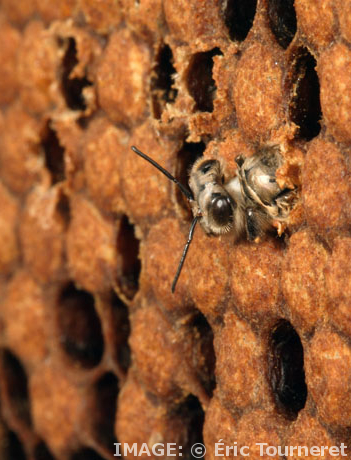Bold young bees bring faster decline
 Local scientists contributed to a study that could explain why bee colonies have been collapsing around the world.
Local scientists contributed to a study that could explain why bee colonies have been collapsing around the world.
Colony Collapse Disorder is a major international problem, with many concerned that declining honey bee populations will harm successful crop pollination.
Bees are vital for successful agriculture around the world. In Australia the contribution of honey bees to crop production is estimated at $5 billion per annum.
Pathogens, pesticides, and nutritional deficits have previously been identified as stressors linked to Colony Collapse Disorder, but it was a mystery why bee colonies sometimes collapsed so rapidly, leaving hive boxes looking like tiny ghost towns.
The new study used radio tracking to follow thousands of bees throughout their entire lives to map their accelerated decline.
The researchers found that bees reacted to stress by starting to forage when young, but the young precocious foragers did not cope well with being made to grow up so fast.
Precocious foragers completed fewer foraging trips in their lifetime, and experienced a higher rate of early death, putting pressure on the colony social structure. This disrupted the colonies’ finely balanced social dynamics, triggering a population collapse.
“Bee colonies contain a precise balance of bees specialised in the different roles the society needs. If that balance is upset by young bees starting to forage early, sometimes the colony cannot cope,” said Dr Andrew Barron of Macquarie University’s Department of Biological Sciences.
“There is a breakdown in division of labor, and loss of the adult population, leaving only brood, food and few adults in the hive.”
With their greater understanding of the collapse process, the authors are now exploring possible strategies to improve colony resilience including rescue packages for sick colonies, and new sensors to detect colonies at risk of failure.








 Print
Print